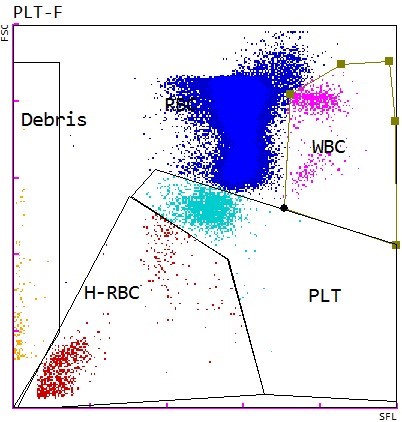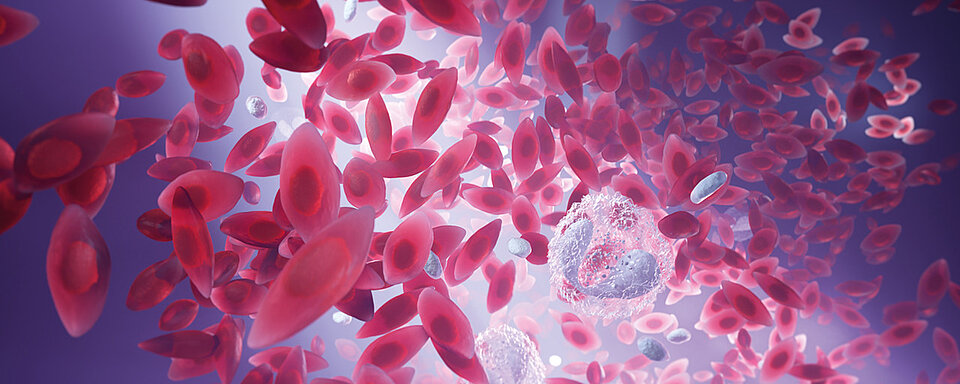Scientific Calendar March 2024
Blood analysis of a gentoo penguin
Which measurement channel on the XN-V analyser is used to measure the different cell types in birds?
PLT-F
WDF
WNR
Congratulations!
That's the correct answer!
Sorry! That´s not completely correct!
Please try again
Sorry! That's not the correct answer!
Please try again
Notice
Please select at least one answer
Scientific background
The Gentoo Penguin (Pygoscelis papua)
Gentoo Penguins, with their characteristic red-orange beaks, white-feather caps and peach-colored feet, belong to the bird species [1]. With a height reaching 75 cm and a weight of up to 5.5 kg, they are the third largest penguin species. Their habitat is the Antarctic Peninsula and its surrounding islands. They are partial to ice-free areas, including coastal plains, sheltered valleys and cliffs, gathering in colonies of breeding pairs that can number from a few dozen to many thousands. Their life span in the wild is 15 to 20 years.
Basics about different cell types in birds and their functions
Similar to other animal species, birds have white blood cells, red blood cells and thrombocytes as their three major blood cell populations. White blood cells consist of lymphocytes, monocytes and granulocytes, the latter being further subdivided into heterophils, eosinophils and basophils. Heterophils are the equivalent cells to mammalian neutrophils, which are termed neutrophils because their secondary granules stain neutrally with Romanowsky-type stains. Heterophils, on the other hand, show eosinophilic staining granules, making them difficult to differentiate from eosinophils in non-mammalian species. Although they appear differently on a stained blood smear, their function is the same as that of neutrophils.
When comparing blood of non-mammalian vertebrates with those of mammals, the most striking difference is the presence of a nucleus in their red blood cells and thrombocytes. This poses some challenges to automated haematology, especially for counting and differentiating white blood cells after lysing reds and thrombocytes. The numerous remaining nuclei heavily interfere with a reliable evaluation of the white line.
Sysmex PLT-F channel of the XN-V Series analyser
With the introduction of the PLT-F channel on XN-V Series analysers, manual counting of WBC, RBC and PLT in birds and other non-mammalian species is a thing of the past. Based on the combination of effective reagents with the use of a gating tool incorporated in the software, these three major cell classes can be separated from each other and reliably counted.
Scattergram interpretation
The below PLT-F scattergram of a Gentoo Penguin outlines the cell clusters of RBC (dark blue), WBC (magenta), PLT (light blue) and their individual gates as well as the area of haemolysed RBC (H-RBC) and debris. After each blood analysis from a bird species, visual inspection of the scattergram and gate adjustment as needed is required to receive a final CBC. In case the white blood cells shall be further subdivided, a blood smear is utilized for a manual or automated CellaVision® DC-1 VET differential count.

References
[1] National Geographic (2023): Gentoo Penguin


